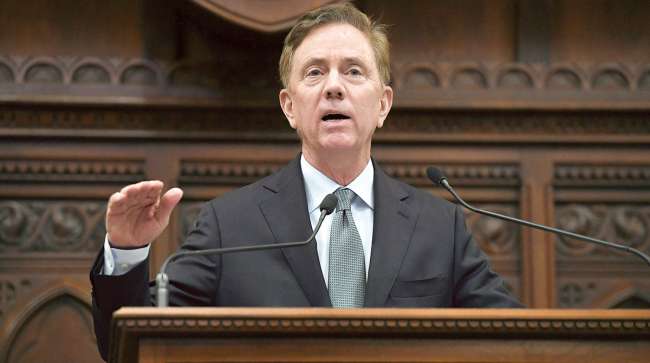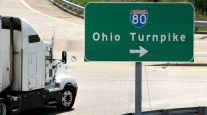The Hartford Courant
Connecticut Gov. Ned Lamont Retools Transportation Plan After Tolls Stall

[Stay on top of transportation news: Get TTNews in your inbox.]
The Lamont administration is revamping its transportation plan, three months after its proposal to establish electronic highway tolls in Connecticut stalled in the Legislature.
The new approach, led by Gov. Ned Lamont’s chief of staff, Ryan Drajewicz, involves maximizing federal money, among other ideas, to pay for billions in improvements to the state’s roads, bridges and mass transit infrastructure.
“The governor said ,‘Get down to Washington, knock on the door of [the U.S. Department of Transportation] and don’t come back until you’ve turned over every rock’… so that’s what I did,” Drajewicz said.
The administration is not saying yet how much the new strategy will rely on electronic tolls, but Drajewicz and other administration officials say this will be a very different initiative from the plan announced early in 2019.
Lamont, a Democrat in his first term, campaigned on a plan to collect tolls only from trucks but reversed course in February, when he rolled out a proposal to include cars as well. Since then, he has floated a number of ideas, including one that would have erected about 50 overhead gantries to electronically charge drivers as they drove on four major highways: Interstate 95, I-91, I-84 and Route 15, which includes the Merritt and Wilbur Cross parkways.
One plan drafted by the governor set toll rates at 4.4 cents per mile at peak hours and 3.5 cents at off-peak times. Those figures include discounts motorists would receive by purchasing a Connecticut E-ZPass and being frequent commuters. Low-income drivers would receive additional discounts, and all rates would be frozen for the first three years.
Lamont and other supporters view tolls as a user fee that would partially be underwritten by out-of-state motorists. They estimated tolls could generate about $800 million annually.
But none of the various toll proposals pushed this year received a vote in the Legislature, where Republicans, and some Democrats, remain philosophically opposed to the idea.
“You will not see a ‘rinse and repeat’ ” of a 50-gantry plan, declared Lamont spokesman Max Reiss. “That’s never going to happen. That’s not coming from this administration.”
That doesn’t mean tolls are off the table, said Drajewicz, who spent significant time this summer examining how other states fund their transportation needs.
“The debate devolved to tolls, but that’s not where it began,’’ Drajewicz said. “There are multiple options that are out there.”
Drajewicz did not disclose the specifics of the administration’s new proposal, saying details still are being worked out. Nor did he say when the plan would be presented to the Legislature; Lamont initially sought a special session on tolls this summer, but no vote has been scheduled.
“Nothing is fully baked yet,’’ Reiss said.
Rep. Themis Klarides, the Republican leader in the House of Representatives, said she’s not surprised that the administration has given up on the 50-gantry plan. “It’s dead because they didn’t have the votes to pass it,’’ she said.
Republicans have put forth their own “Prioritize Progress” transportation plan, funded by borrowing, that would give priority to road and bridge repair over the other long-term projects, including school construction. Lamont and other Democrats have rejected that proposal.
Instead of borrowing to pay for transportation improvements, Drajewicz said he is seeking new funding sources. In his travels to Washington, he learned about the Build America bureau within the U.S. Transportation Department. The bureau provides financial assistance, including grants, bonds and low-interest loans, to state and local governments for transportation projects.
The bureau also funds partnerships between governments and private entities to establish tolls to fund road improvements, an approach Reiss said is not under consideration in Connecticut.
“Washington has other solutions that aren’t toll-focused,’’ Reiss said, “and the administration is still researching on how we can incorporate those options into a broader vision about transportation investment.’’
Klarides said she backs any plan to wring more dollars out of the federal government. “I know they’ve been down there over the summer looking for federal dollars that we for some reason have not availed ourselves of in the past,’’ she said. “I think it’s a great idea … if we can get money and not stick our hands in peoples pockets.”
Drajewicz said he has been talking to transportation officials in other states, including Virginia, Ohio, Georgia, Illinois and Texas, all of which have highway tolls in some form.
Distributed by Tribune Content Agency, LLC


